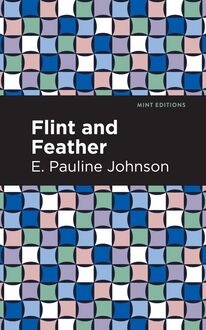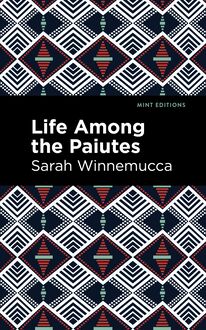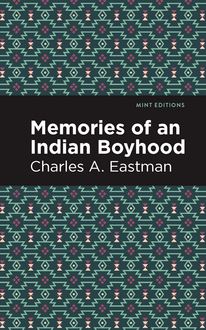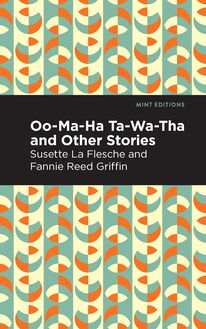-
 Univers
Univers
-
 Ebooks
Ebooks
-
 Livres audio
Livres audio
-
 Presse
Presse
-
 Podcasts
Podcasts
-
 BD
BD
-
 Documents
Documents
-
- Cours
- Révisions
- Ressources pédagogiques
- Sciences de l’éducation
- Manuels scolaires
- Langues
- Travaux de classe
- Annales de BEP
- Etudes supérieures
- Maternelle et primaire
- Fiches de lecture
- Orientation scolaire
- Méthodologie
- Corrigés de devoir
- Annales d’examens et concours
- Annales du bac
- Annales du brevet
- Rapports de stage
La lecture à portée de main
Vous pourrez modifier la taille du texte de cet ouvrage
Découvre YouScribe en t'inscrivant gratuitement
Je m'inscrisDécouvre YouScribe en t'inscrivant gratuitement
Je m'inscrisEn savoir plus
Vous pourrez modifier la taille du texte de cet ouvrage
En savoir plus

Description
Marie L. McLaughlin delivers a memorable selection of Native American stories infused with folklore and oral traditions passed on from one generation to the next. This book features vivid stories with larger-than-life characters and unforgettable adventures.
Myths and Legends of the Sioux is a collection of vast stories rooted in indigenous culture. The tales are striking and memorable, featuring both human and animal protagonists. In one story, a small rabbit uses its wits to outsmart a large bear. In another tale, a crane saves a family from an unfortunate circumstance. Each legend delivers a powerful message that’s applicable to children and adults. With nearly 40 titles to choose from, it’s a robust display of classic lore.
Myths and Legends of the Sioux is filled with notable figures and remarkable creatures. These stories have stood the test of time and continue to reach new and unexpected heights. McLaughlin’s collection is a brilliant observation of Native American culture and identity.
With an eye-catching new cover, and professionally typeset manuscript, this edition of Myths and Legends of the Sioux is both modern and readable.
Sujets
Informations
| Publié par | Mint Editions |
| Date de parution | 02 mars 2021 |
| Nombre de lectures | 0 |
| EAN13 | 9781513277875 |
| Langue | English |
Informations légales : prix de location à la page 0,0400€. Cette information est donnée uniquement à titre indicatif conformément à la législation en vigueur.
Extrait
Myths and Legends of the Sioux
Marie L. McLaughlin
Myths and Legends of the Sioux was first published in 1916.
This edition published by Mint Editions 2021.
ISBN 9781513277462 | E-ISBN 9781513277875
Published by Mint Editions ®
minteditionbooks.com
Publishing Director: Jennifer Newens
Design & Production: Rachel Lopez Metzger
Project Manager: Micaela Clark
Typesetting: Westchester Publishing Services
C ONTENTS F OREWORD T HE F ORGOTTEN E AR OF C ORN T HE L ITTLE M ICE T HE P ET R ABBIT T HE P ET D ONKEY T HE R ABBIT AND THE E LK T HE R ABBIT AND THE G ROUSE G IRLS T HE F AITHFUL L OVERS T HE A RTICHOKE AND THE M USKRAT T HE R ABBIT AND THE B EAR WITH THE F LINT B ODY S TORY OF THE L OST W IFE T HE R ACCOON AND THE C RAWFISH L EGEND OF S TANDING R OCK S TORY OF THE P EACE P IPE A B ASHFUL C OURTSHIP T HE S IMPLETON’S W ISDOM A L ITTLE B RAVE AND THE M EDICINE W OMAN T HE B OUND C HILDREN T HE S IGNS OF C ORN S TORY OF THE R ABBITS H OW THE R ABBIT L OST HIS T AIL U NKTOMI AND THE A RROWHEADS T HE B EAR AND THE R ABBIT H UNT B UFFALO T HE B RAVE W HO W ENT ON THE W ARPATH A LONE AND W ON THE N AME OF THE L ONE W ARRIOR T HE S IOUX W HO M ARRIED THE C ROW C HIEF’S D AUGHTER T HE B OY AND THE T URTLES T HE H ERMIT , OR THE G IFT OF C ORN T HE M YSTERIOUS B UTTE T HE W ONDERFUL T URTLE T HE M AN AND THE O AK S TORY OF THE T WO Y OUNG F RIENDS T HE S TORY OF THE P ET C ROW T HE “W ASNA ” (P EMMICAN M AN ) AND THE U NKTOMI (S PIDER ) T HE R ESUSCITATION OF THE O NLY D AUGHTER T HE S TORY OF THE P ET C RANE W HITE P LUME S TORY OF P RETTY F EATHERED F OREHEAD T HE F OUR B ROTHERS OR I NYANHOKSILA (S TONE B OY ) T HE U NKTOMI (S PIDER ), T WO W IDOWS AND THE R ED P LUMS
F OREWORD
In publishing these “Myths of the Sioux,” I deem it proper to state that I am of one-fourth Sioux blood. My maternal grandfather, Captain Duncan Graham, a Scotchman by birth, who had seen service in the British Army, was one of a party of Scotch Highlanders who in 1811 arrived in the British Northwest by way of York Factory, Hudson Bay, to found what was known as the Selkirk Colony, near Lake Winnipeg, now within the province of Manitoba, Canada. Soon after his arrival at Lake Winnipeg he proceeded up the Red River of the North and the western fork thereof to its source, and thence down the Minnesota River to Mendota, the confluence of the Minnesota and Mississippi Rivers, where he located. My grandmother, Ha-za-ho-ta-win, was a full-blood of the Medawakanton Band of the Sioux Tribe of Indians. My father, Joseph Buisson, born near Montreal, Canada, was connected with the American Fur Company, with headquarters at Mendota, Minnesota, which point was for many years the chief distributing depot of the American Fur Company, from which the Indian trade conducted by that company on the upper Mississippi was directed.
I was born December 8, 1842, at Wabasha, Minnesota, then Indian country, and resided thereat until fourteen years of age, when I was sent to school at Prairie du Chien, Wisconsin.
I was married to Major James McLaughlin at Mendota, Minnesota, January 28, 1864, and resided in Minnesota until July 1, 1871, when I accompanied my husband to Devils Lake Agency, North Dakota, then Dakota Territory, where I remained ten years in most friendly relations with the Indians of that agency. My husband was Indian agent at Devils Lake Agency, and in 1881 was transferred to Standing Rock, on the Missouri River, then a very important agency, to take charge of the Sioux who had then but recently surrendered to the military authorities, and been brought by steamboat from various points on the upper Missouri, to be permanently located on the Standing Rock reservation.
Having been born and reared in an Indian community, I at an early age acquired a thorough knowledge of the Sioux language, and having lived on Indian reservations for the past forty years in a position which brought me very near to the Indians, whose confidence I possessed, I have, therefore, had exceptional opportunities of learning the legends and folk-lore of the Sioux.
The stories contained in this little volume were told me by the older men and women of the Sioux, of which I made careful notes as related, knowing that, if not recorded, these fairy tales would be lost to posterity by the passing of the primitive Indian.
The notes of a song or a strain of music coming to us through the night not only give us pleasure by the melody they bring, but also give us knowledge of the character of the singer or of the instrument from which they proceed. There is something in the music which unerringly tells us of its source. I believe musicians call it the “timbre” of the sound. It is independent of, and different from, both pitch and rhythm; it is the texture of the music itself.
The “timbre” of a people’s stories tells of the qualities of that people’s heart. It is the texture of the thought, independent of its form or fashioning, which tells the quality of the mind from which it springs.
In the “timbre” of these stories of the Sioux, told in the lodges and at the camp fires of the past, and by the firesides of the Dakotas of today, we recognize the very texture of the thought of a simple, grave, and sincere people, living in intimate contact and friendship with the big out-of-doors that we call Nature; a race not yet understanding all things, not proud and boastful, but honest and childlike and fair; a simple, sincere, and gravely thoughtful people, willing to believe that there may be in even the everyday things of life something not yet fully understood; a race that can, without any loss of native dignity, gravely consider the simplest things, seeking to fathom their meaning and to learn their lesson—equally without vain-glorious boasting and trifling cynicism; an earnest, thoughtful, dignified, but simple and primitive people.
To the children of any race these stories can not fail to give pleasure by their vivid imaging of the simple things and creatures of the great out-of-doors and the epics of their doings. They will also give an intimate insight into the mentality of an interesting race at a most interesting stage of development, which is now fast receding into the mists of the past.
M ARIE L. M C L AUGHLIN (Mrs. James McLaughlin)
McLaughlin, S. D., May 1, 1913.
T HE F ORGOTTEN E AR OF C ORN
An Arikara woman was once gathering corn from the field to store away for winter use. She passed from stalk to stalk, tearing off the ears and dropping them into her folded robe. When all was gathered she started to go, when she heard a faint voice, like a child’s, weeping and calling:
“Oh, do not leave me! Do not go away without me.”
The woman was astonished. “What child can that be?” she asked herself. “What babe can be lost in the cornfield?”
She set down her robe in which she had tied up her corn, and went back to search; but she found nothing.
As she started away she heard the voice again:
“Oh, do not leave me. Do not go away without me.”
She searched for a long time. At last in one corner of the field, hidden under the leaves of the stalks, she found one little ear of corn. This it was that had been crying, and this is why all Indian women have since garnered their corn crop very carefully, so that the succulent food product should not even to the last small nubbin be neglected or wasted, and thus displease the Great Mystery.
T HE L ITTLE M ICE
Once upon a time a prairie mouse busied herself all fall storing away a cache of beans. Every morning she was out early with her empty cast-off snake skin, which she filled with ground beans and dragged home with her teeth.
The little mouse had a cousin who was fond of dancing and talk, but who did not like to work. She was not careful to get her cache of beans and the season was already well gone before she thought to bestir herself. When she came to realize her need, she found she had no packing bag. So she went to her hardworking cousin and said:
“Cousin, I have no beans stored for winter and the season is nearly gone. But I have no snake skin to gather the beans in. Will you lend me one?”
“But why have you no packing bag? Where were you in the moon when the snakes cast off their skins?”
“I was here.”
“What were you doing?”
“I was busy talking and dancing.”
“And now you are punished,” said the other. “It is always so with lazy, careless people. But I will let you have the snake skin. And now go, and by hard work and industry, try to recover your wasted time.”
T HE P ET R ABBIT
A little girl owned a pet rabbit which she loved dearly. She carried it on her back like a babe, made for it a little pair of moccasins, and at night shared with it her own robe.
Now the little girl had a cousin who loved her very dearly and wished to do her honor; so her cousin said to herself:
“I love my little cousin well and will ask her to let me carry her pet rabbit around;” (for thus do Indian women when they wish to honor a friend; they ask permission to carry about the friend’s babe).
She then went to the little girl and said:
“Cousin, let me carry your pet rabbit about on my back. Thus shall I show you how I love you.”
Her mother, too, said to her: “Oh no, do not let our little grandchild go away from our tepee.”
But the cousin answered: “Oh, do let me carry it. I do so want to show my cousin honor.” At last they let her go away with the pet rabbit on her back.
When the little girl’s cousin came home to her tepee, some rough boys who were playing about began to make sport of her. To tease the little girl they threw stones and sticks at the pet rabbit. At la
-
 Univers
Univers
-
 Ebooks
Ebooks
-
 Livres audio
Livres audio
-
 Presse
Presse
-
 Podcasts
Podcasts
-
 BD
BD
-
 Documents
Documents
-
Jeunesse
-
Littérature
-
Ressources professionnelles
-
Santé et bien-être
-
Savoirs
-
Education
-
Loisirs et hobbies
-
Art, musique et cinéma
-
Actualité et débat de société
-
Jeunesse
-
Littérature
-
Ressources professionnelles
-
Santé et bien-être
-
Savoirs
-
Education
-
Loisirs et hobbies
-
Art, musique et cinéma
-
Actualité et débat de société
-
Actualités
-
Lifestyle
-
Presse jeunesse
-
Presse professionnelle
-
Pratique
-
Presse sportive
-
Presse internationale
-
Culture & Médias
-
Action et Aventures
-
Science-fiction et Fantasy
-
Société
-
Jeunesse
-
Littérature
-
Ressources professionnelles
-
Santé et bien-être
-
Savoirs
-
Education
-
Loisirs et hobbies
-
Art, musique et cinéma
-
Actualité et débat de société
- Cours
- Révisions
- Ressources pédagogiques
- Sciences de l’éducation
- Manuels scolaires
- Langues
- Travaux de classe
- Annales de BEP
- Etudes supérieures
- Maternelle et primaire
- Fiches de lecture
- Orientation scolaire
- Méthodologie
- Corrigés de devoir
- Annales d’examens et concours
- Annales du bac
- Annales du brevet
- Rapports de stage




















